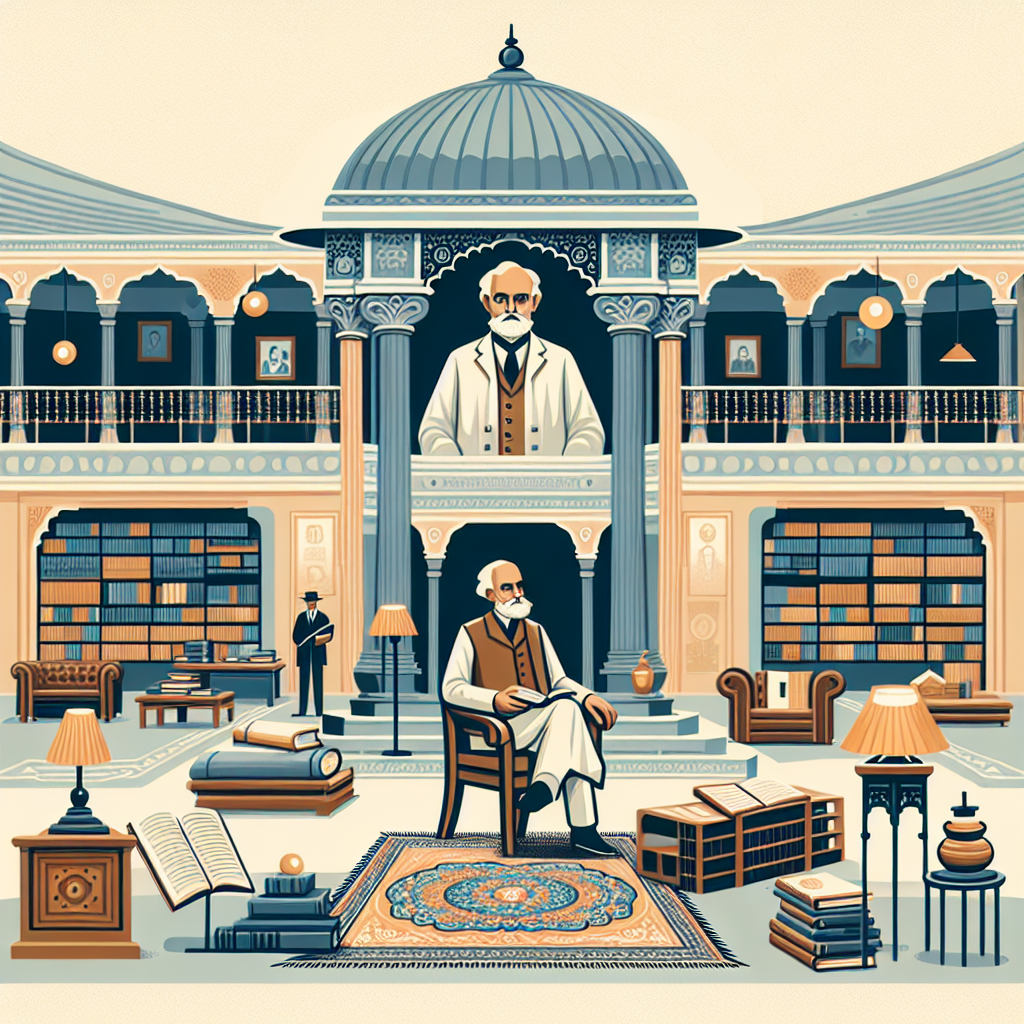Meanwhile: Icarus and the ethics of reviving the extinct (KOR) Published: 14 Apr. 2025, 09:07 Kim Seung-jung The author is an archaeologist and professor at the University of Toronto. In a development that sounds like it belongs in a fantasy epic, Romulus, Remus and Khaleesi are not fictional characters from Game of Thrones, but the names of recently “created” dire wolf pups.
A company claims to have “brought back” these creatures, thought to have gone extinct 13,000 years ago, using genetic material extracted from ice age fossils and merged with the DNA of modern wolves. The claim, if true, would be a scientific marvel, with some drawing comparisons to “Jurassic Park” (1993). Supporters argue such capability could pave the way to restoring endangered species and rehabilitating damaged ecosystems.

The technology could help counter biodiversity loss by reintroducing long-lost predators into modern environments. Yet the claim has also sparked concern. Some scientists view the attempt at “resurrection” less as a tool for ecological restoration and more as an act of scientific vanity.
Critics warn that reanimated predators could destabilize present ecosystems or introduce unforeseen diseases. The central question remains: Should we create new life-forms simply because we can? This debate lies squarely in the realm of ethics. Technological ability alone does not resolve the moral dimensions of manipulating nature on such a scale.
Genetically modified wolf pups Romulus and Remus, two of three successfully bred by reconstructing a genome from the ancient DNA of fossils from the dire wolf that had been extinct for over 12,500 years by Colossal Biosciences, billed as ′′the world’s only de-extinction company′′, are seen a month after their October 1, 2024 birth in north Texas, U.S. Colossal Biosciences.
[REUTERS/YONHAP] In Greek mythology, similar tensions played out in the blurred boundaries between ambition and restraint. Daedalus, often called the genius of creation, was the architect of the famed labyrinth — a maze designed to confine the monstrous Minotaur. Yet Daedalus was also responsible for the Minotaur’s birth, having built a wooden cow that enabled Queen Pasiphae to fulfill her unnatural desire for a sacred bull.
Related Article [Meanwhile] Same documents, different reactions (KOR) [Meanwhile] The power of Kumamoto [Meanwhile] The weight of apology [Meanwhile] Death of the two-horse carriage system Daedalus was a bridge between imagination and reality, a craftsman who gave physical form to myth. Today, scientists play a similar role, standing at the edge of possibility. Like Icarus, who flew on wings of wax and feathers made by his father Daedalus, we are soaring high, perhaps too close to the sun.
Icarus’s fall, when the wax melted, was a cautionary tale about hubris — overstepping natural boundaries reserved for the divine. In classical Greek, hubris meant transgressing into realms meant for the gods — violating the natural order. Are we attempting to do the same? Or are we trying to make amends for damage humanity has inflicted on the planet? These are questions that science alone cannot answer.
Translated from the JoongAng Ilbo using generative AI and edited by Korea JoongAng Daily staff. 다이달로스의 날개 김승중 고고학자·토론토대 교수 혹시 로물루스, 레무스, 그리고 칼리시를 아시나요? ‘왕좌의 게임’에서 튀어나온 캐릭터 같지만 이들은 최근 생명공학 기술로 되살아난 다이어울프, 즉 고대 거대 늑대의 새끼들이다. 1만3000년 전 멸종된 이 포식자는 빙하기 시대 화석에서 추출한 DNA와 현대 늑대의 유전자가 결합하며 다시 태어났다.
마치 쥐라기 공원이 현실화된 듯한 순간이다. 이 기술은 멸종 위기종을 복원하고 생태계를 복구하는 데 응용될 계획이다. 하지만 일부 과학자들은 이번 프로젝트가 생태 복원이 아닌 과학계의 허영이라 평한다.
되살아난 늑대가 생태계를 교란하거나 예상치 못한 질병을 퍼뜨릴 수 있다는 우려도 있다. 기술적으로 가능하다고 해서 새로운 종류의 생명을 창조해도 되는가. 이런 물음은 윤리의 영역이다.
고대 그리스신화에서도 인간의 야망과 신의 경고 사이에서 태어난 혼종 생물들이 인간세의 질서를 혼란시킨다. 창조의 천재라 불리는 다이달로스는 미궁(迷宮)을 만든 장본인이다. 미궁은 괴물 미노타우로스를 가두기 위한 것이었는데, 미노타우로스가 다이달로스의 발명인 나무 암소 덕분에 태어났다.
신성한 황소를 사랑한 왕비 파시파에가 나무 암소 안에 들어가 황소에 접근하기 위해 다이달로스에게 만들어달라고 요청한 것이었다. 다이달로스는 상상과 현실을 잇는 다리였으며 신화를 실물로 구현해낸 존재였다. 지금 우리는 다이달로스가 만든 깃털과 밀랍의 날개를 단 채, 이카로스처럼 하늘을 날고 있다.
아버지의 경고를 무시하고 태양에 너무 가까이 간 이카로스는 밀랍이 녹아 결국 추락했다. 고대 그리스어에서 ‘휴브리스(hubris)’는 인간이 신의 영역, 즉 자연의 질서라는 경계를 넘는 행위를 의미했다. 지금 우리는 그 경계를 넘고 있는 것인지, 아니면 인류가 자연에 입힌 손실을 조금이나마 갚으려는 것인지 생각해 봐야 한다.
.
Meanwhile: Icarus and the ethics of reviving the extinct (KOR)

Kim Seung-jung The author is an archaeologist and professor at the University of Toronto. In a development that sounds like it belongs in a fantasy epic, Romulus, Remus and Khaleesi are not fictional characters from Game of Thrones, but the names of recently “created” dire wolf pups. A company claims to have “brought back” these creatures, thought to have gone extinct 13,000 years ago, using genetic material extracted from ice age fossils and merged with the DNA of modern wolves. The claim, if true, would be a scientific marvel, with some drawing comparisons to “Jurassic Park” (1993). Supporters argue such capability could pave the way to restoring endangered species and rehabilitating damaged ecosystems. The technology could help counter biodiversity loss by reintroducing long-lost predators into modern environments. Yet the claim has also sparked concern. Some scientists view the attempt at “resurrection” less as a tool for ecological restoration and more as an act of scientific vanity. Critics warn that reanimated predators could destabilize present ecosystems or introduce unforeseen diseases. The central question remains: Should we create new life-forms simply because we can? This debate lies squarely in the realm of ethics. Technological ability alone does not resolve the moral dimensions of manipulating nature on such a scale. Genetically modified wolf pups Romulus and Remus, two of three successfully bred by reconstructing a genome from the ancient DNA of fossils from the dire wolf that had been extinct for over 12,500 years by Colossal Biosciences, billed as ′′the world’s only de-extinction company′′, are seen a month after their October 1, 2024 birth in north Texas, U.S. Colossal Biosciences. [REUTERS/YONHAP] In Greek mythology, similar tensions played out in the blurred boundaries between ambition and restraint. Daedalus, often called the genius of creation, was the architect of the famed labyrinth — a maze designed to confine the monstrous Minotaur. Yet Daedalus was also responsible for the Minotaur’s birth, having built a wooden cow that enabled Queen Pasiphae to fulfill her unnatural desire for a sacred bull. Related Article[Meanwhile] Same documents, different reactions (KOR)[Meanwhile] The power of Kumamoto[Meanwhile] The weight of apology[Meanwhile] Death of the two-horse carriage system Daedalus was a bridge between imagination and reality, a craftsman who gave physical form to myth. Today, scientists play a similar role, standing at the edge of possibility. Like Icarus, who flew on wings of wax and feathers made by his father Daedalus, we are soaring high, perhaps too close to the sun. Icarus’s fall, when the wax melted, was a cautionary tale about hubris — overstepping natural boundaries reserved for the divine. In classical Greek, hubris meant transgressing into realms meant for the gods — violating the natural order. Are we attempting to do the same? Or are we trying to make amends for damage humanity has inflicted on the planet? These are questions that science alone cannot answer. Translated from the JoongAng Ilbo using generative AI and edited by Korea JoongAng Daily staff. 다이달로스의 날개 김승중 고고학자·토론토대 교수 혹시 로물루스, 레무스, 그리고 칼리시를 아시나요? ‘왕좌의 게임’에서 튀어나온 캐릭터 같지만 이들은 최근 생명공학 기술로 되살아난 다이어울프, 즉 고대 거대 늑대의 새끼들이다. 1만3000년 전 멸종된 이 포식자는 빙하기 시대 화석에서 추출한 DNA와 현대 늑대의 유전자가 결합하며 다시 태어났다. 마치 쥐라기 공원이 현실화된 듯한 순간이다. 이 기술은 멸종 위기종을 복원하고 생태계를 복구하는 데 응용될 계획이다. 하지만 일부 과학자들은 이번 프로젝트가 생태 복원이 아닌 과학계의 허영이라 평한다. 되살아난 늑대가 생태계를 교란하거나 예상치 못한 질병을 퍼뜨릴 수 있다는 우려도 있다. 기술적으로 가능하다고 해서 새로운 종류의 생명을 창조해도 되는가. 이런 물음은 윤리의 영역이다. 고대 그리스신화에서도 인간의 야망과 신의 경고 사이에서 태어난 혼종 생물들이 인간세의 질서를 혼란시킨다. 창조의 천재라 불리는 다이달로스는 미궁(迷宮)을 만든 장본인이다. 미궁은 괴물 미노타우로스를 가두기 위한 것이었는데, 미노타우로스가 다이달로스의 발명인 나무 암소 덕분에 태어났다. 신성한 황소를 사랑한 왕비 파시파에가 나무 암소 안에 들어가 황소에 접근하기 위해 다이달로스에게 만들어달라고 요청한 것이었다. 다이달로스는 상상과 현실을 잇는 다리였으며 신화를 실물로 구현해낸 존재였다. 지금 우리는 다이달로스가 만든 깃털과 밀랍의 날개를 단 채, 이카로스처럼 하늘을 날고 있다. 아버지의 경고를 무시하고 태양에 너무 가까이 간 이카로스는 밀랍이 녹아 결국 추락했다. 고대 그리스어에서 ‘휴브리스(hubris)’는 인간이 신의 영역, 즉 자연의 질서라는 경계를 넘는 행위를 의미했다. 지금 우리는 그 경계를 넘고 있는 것인지, 아니면 인류가 자연에 입힌 손실을 조금이나마 갚으려는 것인지 생각해 봐야 한다.











